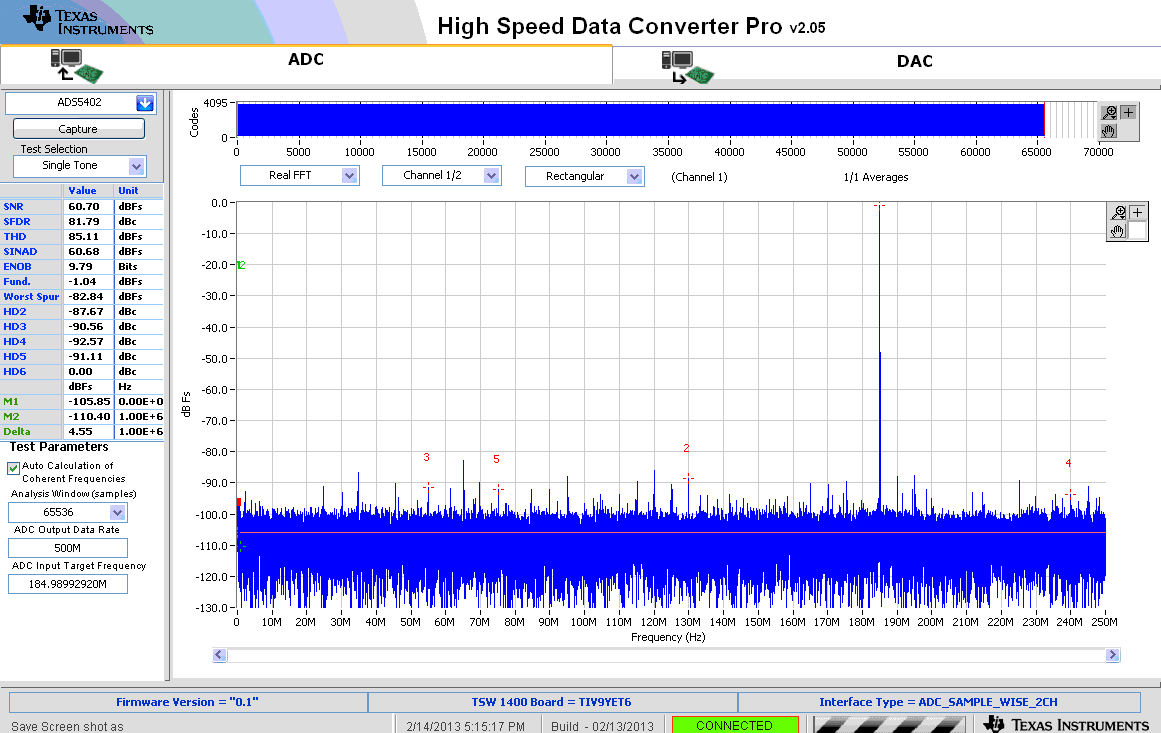Hello,
A while back I was given access to firmware source code for the ADS5404 and TSW1400. It was given to me by Jim Seton in this thread. The firmware project is title 'golden trigger'. It is clear this firmware was designed to work with many different ADCs.
I'm aware TI doesn't support custom firmware, but I'm hoping to get started getting the base firmware to work properly. Once I get to that point, I can make modifications on my own- but currently it's not functioning properly. I can compile the firmware and load it on the FPGA, but the output to HSDC Pro is useless- there is no semblance of the signal left. Here is what I've done:
HSDC Pro Included Firmware + 15 MHz ChA Signal + 500 MHz ADC Clock signal
The configuration above functions properly and I can see the 15 MHz signal in HSDC Pro. However, in the following configuration I get nothing:
TI 'golden trigger' firmware loaded with HSDC Pro + 15 MHz ChA Signal + 500 MHz ADC Clock signal
I can send a capture command, and it is pulling something, but it appear to be just noise. There are a few things I made sure were set in the defines.vh file, but they did not fix my issue. First, I have:
'define ADC_BM0 'ADS5400_BMO
For the bus, I currently have:
'define BITWISE_DDR_2W_12B
I chose that as I have a 12-bit ADC. Apart from that, I'm not sure which one I'd like to have defined (and I've tried each and every one individually).
If anyone familiar with this firmware could get me at least to the point where the base firmware was functioning properly, it would be appreciated! If there is base firmware specifically for the ADS5404 that works out of the box, that would be okay too!
Thank you for all of your wonderful help thus far, TI!
Nicholai





